What Is IT Ticketing System? Benefits, Best Practices and Future Trends
Effectively managing IT issues and ensuring customer satisfaction requires a robust IT ticketing system. From ticket creation to resolution, seamless workflows, communication, and automation are paramount. In this article, you will learn what an IT ticketing system is and how it works, and get the 5 best IT ticketing systems. We will also introduce best practices for implementing an IT ticketing system and its future direction at the end.
What Is IT Ticketing System and How Does It Work?
An IT ticketing system is a software application that helps IT teams track, manage, and resolve issues reported by customers or end-users. IT staff can create, assign, prioritize, and monitor tickets, which are records of each problem or request. An IT ticketing system also enables communication between IT agents and customers and collaboration among IT team members.

How Does It Work?
An IT ticketing system works by following a basic workflow:
- A customer or end-user reports an issue or requests through a web portal, email, phone, chat, or social media.
- The IT ticketing system automatically creates a ticket with a unique ID. It captures the details of the issue or request, such as the customer's name, contact information, description, category, severity, and status.
- The IT ticketing system assigns the ticket to an IT agent based on predefined rules, such as the ticket's category, severity, or availability of the agent.
- The IT agent receives a notification about the ticket and starts working on it. The IT agent can update the ticket's status, add notes, attach files, or escalate it to another agent or supervisor.
- The IT agent communicates with the customer or end-user through the IT ticketing system and provides updates, solutions, or feedback. The customer or end-user can also reply, rate, or close the ticket through the IT ticketing system.
- The IT ticketing system records the history and resolution of the ticket and generates reports and analytics on the performance and efficiency of the IT team.
Features of IT Ticketing System
An IT ticketing system can have various features that enhance its functionality and usability. Some of the standard features are:
Omnichannel Support
Omnichannel support means the IT ticketing system can handle multiple communication channels, such as web portal, email, phone, chat, or social media. This allows customers or end-users to choose their preferred channel to report issues or make requests and ensures that all the interactions are centralized and synchronized in the IT ticketing system.

Ticketing Management
Ticketing management means the IT ticketing system can create, assign, prioritize, and monitor tickets efficiently and effectively. This allows IT agents to handle tickets according to their urgency, complexity, and workload and ensures every ticket is noticed and remembered.
Automated Workflow
Automated workflow mean the IT ticketing system can automate repetitive tasks and streamline the process. This allows IT agents to save time and effort and focus on solving complex issues or providing quality service. For example, the IT ticketing system can automatically assign tickets, send notifications, escalate tickets, or close tickets based on predefined rules or triggers.
SLA Management
SLA management means that the IT ticketing system can track and measure the service level agreements (SLAs) between the IT team and the customers or end-users. SLAs are contracts that define the expectations and obligations of both parties, such as the response time, resolution time, or satisfaction rate. The IT ticketing system can monitor SLA compliance and alert IT agents or supervisors if any breaches or violations occur.
Self-Service Options
Self-service options mean that the IT ticketing system can empower customers or end-users to solve their own issues or make their own requests without contacting the IT team. This allows customers or end-users to get faster and easier solutions and reduces the workload and cost of the IT team. For example, the IT ticketing system can provide a web portal where customers or end-users can submit tickets, check the status of their tickets, or access FAQs, guides, or tutorials.

Report and Analysis
Report and analysis mean that the IT ticketing system can generate and display data and insights on the performance and efficiency of the IT team and the IT ticketing system itself. This allows IT managers or supervisors to evaluate and improve the IT service quality and customer satisfaction. For example, the IT ticketing system can provide reports and dashboards on the number of tickets, the average response time, the resolution rate, the customer feedback, or the agent's productivity.
Tool Integration
Tool integration means the IT ticketing system can connect and interact with other software applications or tools the IT team uses. This allows IT agents to access and share information and resources across different platforms and enhances the functionality and usability of the IT ticketing system.
Knowledge Base
A knowledge base means the IT ticketing system can store and organize the information and knowledge the IT team has accumulated over time. This allows IT agents to access and reuse the best practices and solutions for common or recurring issues and improves the consistency and accuracy of the IT service.
Chatbot
Chatbot means that the IT ticketing system can use artificial intelligence (AI) or natural language processing (NLP) to simulate a human conversation with customers or end-users. This allows customers or end-users instant and personalized responses, reducing the need for human intervention.
Best IT Ticketing Systems for 2024
You must be wondering what are the best IT ticketing systems available. Now, let's explore the list of latest IT ticketing systems in 2024:
1Zendesk
Zendesk is a cloud-based platform that simplifies customer service operations, improves agent productivity, and delivers lasting customer experiences. It offers omnichannel self-service, sentiment analysis, service level agreements, contextual support, artificial intelligence, and more features for startups, SMBs, and enterprises.

Key Features
- Omnichannel support for email, phone, chat, web, social media, and more
- AI-powered chatbot and self-service portal to deflect common queries
- Advanced analytics and reporting to measure and improve performance
- Flexible and scalable platform that can be customized and extended with apps and APIs
- Integration with popular tools like Microsoft 365, Slack, Salesforce, and more
Price
Prices range from $19 to $115 per agent per month. You can also try Zendesk for free for 14 days.
2Zoho Desk
Zoho Desk is a cloud-based platform that helps you provide better customer support and ensure customer loyalty. Desk helps you be more accessible to your customers, provides them with quick resolutions, and makes doing business with you convenient. Desk empowers agents with powerful tools and helpful context so they remain productive, confident, and organized.
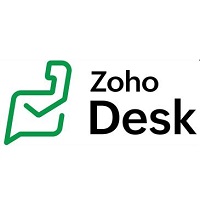
Key Feature
- Omnichannel self-service, sentiment analysis, service level agreements, and more
- Contextual support, work modes, artificial intelligence, and advanced response editor
- Built-in analytics, happiness ratings, workflow and automation, and predictive intelligence
- Integration with Zoho CRM and other Zoho apps, as well as third-party apps like Gmail, Slack, and more
Price
Prices start from $20 to $50 per agent per month. You can also try Zoho Desk for free for 15 days.
3HappyFox
HappyFox is a practical help desk and customer support software solution that reduces chaos and brings order to your support process with a robust support ticket system, self-service knowledge base, and community forums. It helps you optimize your workflow, reduce chaos, and deliver outstanding support with advanced features and integrations.
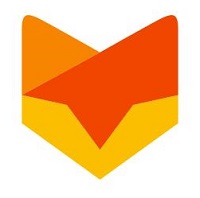
Key Features
- Robust ticketing system, self-service knowledge base, and community forums
- Remote support integration, access management, and NOC services
- SLA reporting, asset management, and incident tracking
- Integration with popular tools like Microsoft 365, Slack, Salesforce, and more
Price
Prices start from $39 to $99 per agent per month.
4ConnectWise
ConnectWise is a comprehensive platform that connects your entire organization and offers everything you need to automate, manage, grow, and secure your business and clients. It provides a complete customer service solution that is easy to use and scales with your business.

Key Feature
- Cybersecurity management, unified monitoring and management, and business management
- Professional services automation, quote and proposal automation, and IT documentation
- Help desk services, dedicated technicians, and project assistance
- Integration with over 200 third-party app extensions and more than 45 native apps
Price
ConnectWise has different product pricing options, depending on your needs and preferences. You can also contact the sales team or sign up for a free trial.
5SolarWinds Web Help Desk
SolarWinds Web Help Desk is a ticketing and asset management software that automates and simplifies IT support tasks. It integrates with Active Directory, LDAP, and Dameware Remote Support.
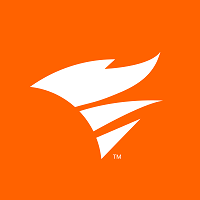
Key Features
- Automated ticketing management, SLA reporting, and remote support integration
- Asset management, tracking, and reporting
- Change management, approval process, and internal tickets
- Parent/child ticketing, relational ticketing, and project and task management
Price
SolarWinds Web Help Desk software is priced per technician and can be purchased through perpetual or annual subscription licenses. Starting at $256.
Benefits of IT Ticketing System
An IT ticketing system is a tool that helps IT teams track, prioritize, and resolve service requests, incidents, and alerts from customers or employees. It also provides a centralized communication, collaboration, automation, and reporting platform. By implementing an IT ticketing system, organizations can enjoy many benefits, such as:
Increasing Productivity and Efficiency
An IT ticketing system can help IT teams work more productively and efficiently by organizing and cataloging all incoming support queries, consolidating interactions from multiple channels into one thread, and maintaining customer service standards through SLAs. It also enables agents to access the context and history of previous customer communications, reducing the need for repetitive questions and speeding up the resolution process.
Reducing Labor Costs
An IT ticketing system can help reduce labor costs by automating processes and workload management, such as assigning tickets to available agents, sending automated responses and updates, and escalating tickets to higher-level support when needed.

Increasing Customer Satisfaction and Loyalty
An IT ticketing system can help increase customer satisfaction and loyalty by providing faster and more consistent service, improving customer communication, and collecting feedback after the resolution. Customers can also benefit from the self-service options that an IT ticketing system offers, such as accessing a knowledge base, submitting tickets through a service portal, or chatting with a virtual agent.
Enhancing Intersectoral Collaboration
An IT ticketing system can help enhance intersectoral collaboration by facilitating the sharing of information and resources among different departments, teams, and agents. For example, an IT ticketing system can allow agents to transfer tickets to other agents or groups, add notes or attachments to tickets, or tag tickets with relevant categories or tags.
Easier Access to Self-Service for Customers
An IT ticketing system can provide easier access to self-service for customers by offering various channels and methods for them to submit and track their tickets, such as web, mobile, email, phone, or virtual agents. Customers can also view the status of their tickets, update their information, or cancel their tickets through a service portal.
Extended Helpdesk Functionality
An IT ticketing system can help extend the helpdesk functionality by providing more features and capabilities to improve service quality and efficiency. For example, an IT ticketing system can provide real-time data and analytics that can help monitor and measure the performance and productivity of the IT team, such as the number of tickets, the resolution time, customer satisfaction, or the SLA compliance.
Best Practices for IT Ticketing Systems: How to Implement Better
An IT ticketing system is a tool that helps IT teams manage and resolve issues reported by customers or end-users. IT staff can track, prioritize, assign tickets, communicate with customers, and monitor performance. A sound IT ticketing system can improve customer satisfaction, reduce costs, and increase efficiency.
However, more than simply having an IT ticketing system is required. You must also follow some best practices to ensure your system is effective and aligned with your business goals. Here are some of the best practices for IT ticketing systems that you should implement:
Regular Employee Training
Your IT staff are the ones who will use the ticketing system daily, so they need to be familiar with its features and functions. You should provide regular training sessions for your employees to teach them how to use the system properly, how to follow the ticketing process, and how to handle different types of tickets.

Collect Customer Feedback
Customer feedback is essential for improving your IT service quality and customer satisfaction. You should collect feedback from your customers after every ticket resolution using surveys, ratings, or comments.
Set SLA Policies and Goals
A service level agreement (SLA) is a contract that defines the expectations and responsibilities of both parties in an IT service relationship. It specifies the service's scope, quality, and timeliness, as well as the penalties for non-compliance. You should set clear and realistic SLA policies and goals for your IT ticketing system and communicate them to your customers and employees. You should also monitor and measure your SLA performance and report it to your stakeholders.
Configure Workflow and Automation
Workflow and automation are features that can help you streamline and optimize your IT ticketing process. Workflow allows you to define the steps and rules for handling tickets, such as routing, escalation, approval, and closure. Automation will enable you to perform certain actions automatically, such as sending notifications, updating statuses, or assigning tickets. You should configure your workflow and automation settings according to your business needs and best practices and test them regularly to ensure they work as intended.
Integrate with Other Business Tools
Your IT ticketing system should collaborate but rather integrate with other business tools you use, such as email, chat, CRM, ERP, or BI. This can help you improve your data accuracy, visibility, and accessibility and enhance your collaboration and communication across different teams and departments. You should choose an IT ticketing system that supports integration with your existing tools or use APIs or connectors to enable integration.
Maintain Updated Knowledge Base
A knowledge base is a repository of information to help customers and employees find answers to common questions, problems, or issues. It can include articles, FAQs, guides, videos, or other types of content. You should maintain an updated and comprehensive knowledge base for your IT ticketing system and make it easily accessible and searchable for your users.
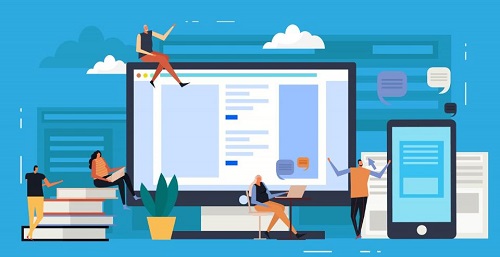
Promote Self-Service
Self-service is a feature that allows your customers to resolve their issues without contacting your IT staff. It can include options such as submitting tickets, checking statuses, accessing the knowledge base, or using chatbots. You should promote self-service for your IT ticketing system, as it can reduce ticket volume, workload, and costs and increase customer satisfaction and empowerment.
Timely Analysis and Optimization
Finally, you should conduct timely analysis and optimization for your IT ticketing system to ensure it performs well and meets your business goals. You should collect and analyze data from your system, such as ticket volume, resolution time, customer satisfaction, SLA compliance, or employee productivity.
Future Trends of IT Ticketing Systems
An IT ticketing system that effectively manages IT issues and improves customer satisfaction is an important tool for organizations and will be increasingly valued. So how will IT ticketing systems evolve as technology and the times progress?
Conversational AI
Conversational AI uses natural language processing, machine learning, and speech recognition to enable human-like interactions between users and systems. It can enhance the IT ticketing systems by automating the ticket creation, classification, and routing, providing instant answers to common queries and FAQs, escalating complex or urgent issues to human agents, collecting feedback and satisfaction ratings, and analyzing the data and insights from the conversations.
AR Support
AR (Augmented Reality) is the technology that overlays digital information or graphics in the real-world environment. It can improve the IT ticketing systems by offering customers and IT staff more immersive and interactive support. It can help them visualize and troubleshoot problems, access relevant information and guidance, perform remote inspections and repairs, and collaborate with other experts.
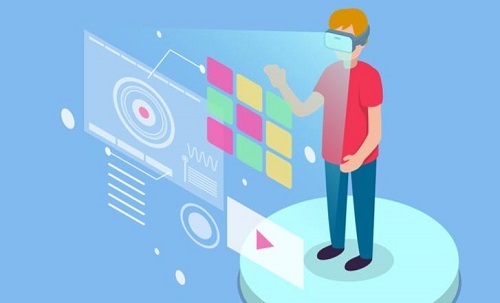
Blockchain Security
Blockchain is a distributed ledger system that records and verifies transactions using cryptography and consensus mechanisms. It can ensure the integrity and confidentiality of the IT tickets and transactions and prevent fraud and tampering. It can also enable smart contracts that automate the execution and enforcement of service-level agreements, policies, and rules.
Remote Work Integration
Remote work is working from anywhere outside the traditional office setting. It can facilitate collaboration and communication among the distributed IT teams and customers and improve the productivity and flexibility of the IT service delivery. It can also reduce the costs and environmental impacts of travel and commuting. It requires the IT ticketing systems to support various devices, platforms, and networks and to provide seamless and secure access to IT resources and services.
Extra: Remote Technical Support Solution Focusing on Mobile Devices
An all-in-one IT ticketing system can handle any IT support task. However, you don't always need it. If you value simplicity, you may only need a remote IT support solution that best suits your needs. If you need to remote support mobile devices, try AirDroid Remote Support.
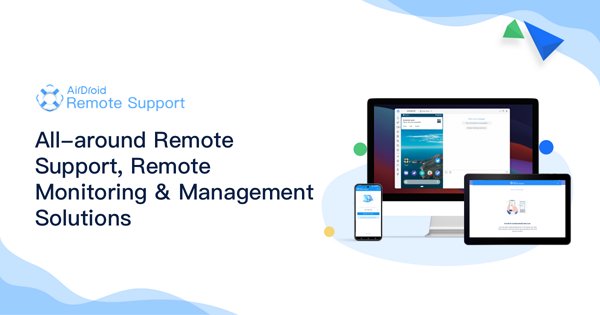
AirDroid Remote Support is a comprehensive and secure remote support software that allows you to access and assist Android and iOS devices remotely. You can provide remote support intuitively through features such as live chat, tutorial gesture, AR camera, and more. You can also troubleshoot unattended devices using black screen mode and security policies. All in all, AirDroid Remote Support is a powerful and efficient remote support and lightweight management solution.
Conclusion
IT ticketing systems have become an essential IT support and management tool for organizations. Organizations need to follow the best practices for implementing an IT ticketing system and the trends in IT ticketing systems to do better.
For remote support focusing on mobile devices, consider AirDroid Remote Support, which provides comprehensive solutions for Android and iOS. Adopting best practices and continuous improvement is crucial for successful IT service management.






Leave a Reply.